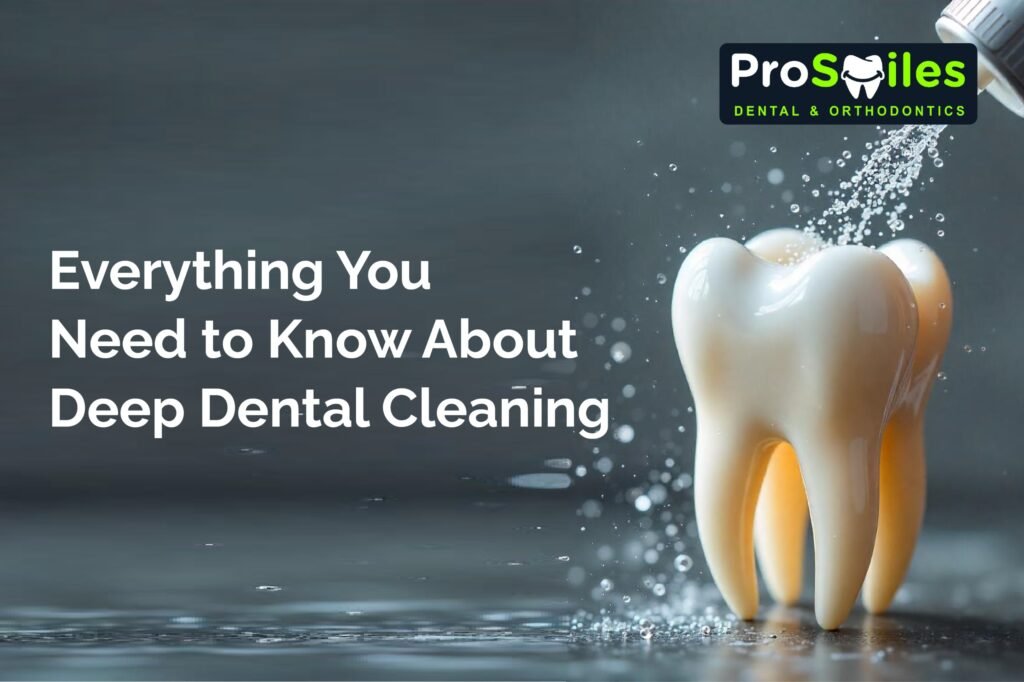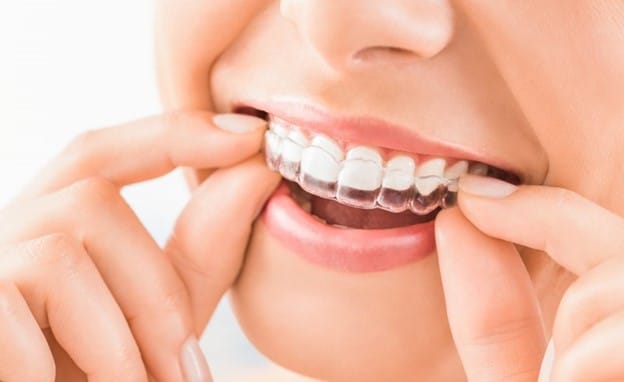Maintaining good oral hygiene is crucial for overall health, but sometimes, regular brushing and routine cleanings aren’t enough to prevent or treat more advanced dental issues. That’s where deep dental cleaning comes into play.
Unlike a standard cleaning, a deep cleaning targets the areas below the gumline to treat and prevent gum disease.
In this blog, we will walk you through everything you need to know about deep dental cleaning—what it involves, why it’s important, and what to expect before, during, and after the procedure.
What is Deep Dental Cleaning?
A deep dental cleaning, also known as scaling and root planing, is a specialized dental procedure that goes beyond the surface cleaning of your teeth to clean below the gumline. It is designed to remove built-up plaque, tartar, and bacteria from the periodontal pockets—spaces that form between the teeth and gums when gum disease starts to develop.
While a routine dental cleaning focuses on removing plaque from the surface of your teeth and along the gumline, a deep cleaning goes deeper, addressing areas that may not be reached with regular brushing, flossing, or standard cleaning.
When is Deep Dental Cleaning Needed?
Deep dental cleaning is typically recommended if you have signs of gum disease (periodontal disease), particularly if the condition has chances of advancing to the point where routine cleaning can no longer maintain healthy gums and it requires extensive gum cleaning.
The issues that call for deep dental cleaning usually include:
Gum inflammation or bleeding: If your gums are red, swollen, or bleed when you brush or floss, this can be an early sign of gum disease.
Gum recession: If your gums are pulling away from your teeth, exposing more of your tooth’s root, this can signal a more advanced stage of gum disease.
Bad breath: Persistent bad breath (halitosis) can be a sign of bacteria buildup below the gumline.
Pocket depth of 4mm or more: Dentists measure the depth of the pockets between your teeth and gums during a routine exam. Healthy gums typically have pockets that measure 1-3mm in depth. Anything 4mm or deeper may require a deep cleaning.
Plaque and tartar buildup: If plaque (a sticky film of bacteria) or tartar (hardened plaque) has accumulated below the gumline, a deep cleaning may be necessary to remove it.
The Difference Between Routine Cleaning and Deep Cleaning
Routine Cleaning
A regular cleaning (also called prophylaxis) focuses on the removal of plaque and tartar from the tooth surfaces above the gumline and between the teeth. It’s a preventive measure to maintain healthy teeth and gums.
Deep Cleaning
A deep cleaning, or scaling and root planing, is both preventive and therapeutic. Scaling involves removing plaque and tartar from below the gumline, while root planing smooths the root surfaces of the teeth to help the gums reattach and heal. Deep cleanings are necessary to treat gum disease, prevent further progression, and potentially save teeth from more invasive treatments like gum surgery.
What to Expect During a Deep Dental Cleaning
Understanding the process of deep cleaning can help alleviate any anxiety or uncertainty. Here’s a step-by-step look at what to expect:
Initial Examination
Your dentist or periodontist will begin by thoroughly examining your teeth and gums. They’ll measure the depth of the pockets between your gums and teeth using a special tool called a periodontal probe. X-rays may also be taken to assess bone loss, which is another sign of advanced gum disease.
Local Anesthesia
If you’re worried that deep dental health hurts your teeth, you can be reassured that you won’t be experiencing pain during the course of the treatment. Since deep cleaning involves working below the gumline, it can cause discomfort. To ensure you remain comfortable throughout the procedure, your dentist will usually administer a local anesthetic to numb the area being treated. The procedure may be done in multiple visits depending on the extent of gum disease and the areas needing treatment.
Scaling
The scaling process involves using specialized tools (manual scalers or ultrasonic devices) to remove plaque and tartar from the surfaces of your teeth below the gumline, inside the pockets. These tools vibrate at high frequencies to break up the tartar deposits, which are then flushed away with water.
Root Planing
After scaling, the dentist will smooth the tooth’s root surfaces to remove rough spots where bacteria can accumulate. This process, known as root planing, also helps your gums reattach to the teeth and heal more effectively.
Antibiotic Application
In some cases, your dentist may apply an antibiotic gel or prescribe a mouth rinse to help reduce bacteria in the periodontal pockets and prevent infection during healing.
Does deep cleaning teeth hurt?
Deep cleaning teeth can cause some discomfort, but it doesn’t hurt. To minimise the pain, dentists often use numbing agents to reduce any pain during the procedure. Afterward the procedure, you might experience mild soreness or sensitivity, but this usually subsides within a few days.
How much is a deep dental cleaning for adults
The cost of a deep dental cleaning for adults can vary depending on several factors, including location, the severity of the case, and the dentist’s expertise. On average, deep cleaning may range from $150 to $350 per quadrant (one-fourth of the mouth), which means a full-mouth treatment can cost between $600 and $1,400. This procedure, known as scaling and root planing, involves cleaning below the gumline to remove plaque, tartar, and bacteria that regular cleanings can’t reach. At ProSmiles, we offer payment plans or accept insurance to help manage costs, so we suggest that you check your coverage options before you get in touch with us.
Recovery and Aftercare
Once your deep cleaning is completed, proper aftercare is essential for ensuring successful healing and preventing further gum disease. Here’s what to expect during recovery:
Numbness: The effects of local anesthesia may last for a few hours. During this time, avoid eating until the numbness wears off to prevent accidentally biting your cheek or tongue.
Mild Discomfort: It’s common to experience some discomfort or sensitivity after the procedure, especially around the treated gums. Over-the-counter pain relievers, such as ibuprofen, can help alleviate any soreness.
Soft Food Diet: Stick to soft foods for the first couple of days to avoid putting too much pressure on your healing gums.
Oral Hygiene: Brushing and flossing regularly are essential, but be gentle around the treated areas to avoid irritating your gums. Your dentist may recommend a special toothpaste or mouthwash to help with healing.
Follow-Up Visits: Your dentist will likely schedule follow-up appointments to monitor your progress and ensure your gums are healing properly. In some cases, multiple deep cleanings may be necessary.
Maintaining Dental Health: Regular dental visits (every 3 to 6 months) for cleanings and checkups will help keep your gums healthy and prevent the recurrence of periodontal disease.
Deep dental cleaning is an essential procedure for treating gum disease and maintaining long-term oral health. It’s a preventive and therapeutic measure designed to stop the progression of gum disease, reduce inflammation, and protect your teeth from future damage. While the process may seem intimidating, understanding what to expect and the benefits it offers can help ease any concerns.
Worried About Gum Health? Let Prosmiles Help You Heal
If your gums are bleeding, your breath feels off, or you’re long overdue for a cleaning, a deep dental cleaning might be just what you need. At Prosmiles Dental, we go beyond the surface to protect your smile and prevent gum disease before it causes lasting damage. Our caring team uses advanced techniques to gently clean below the gum line and restore your oral health.




